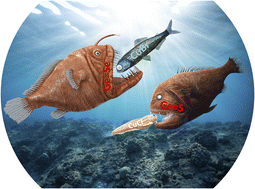Abstract
Germacarbonyl compounds are the germanium analogs of carbonyl compounds requiring an inert atmosphere for stability. Making these compounds survive the ambient conditions was not feasible given the lability of the Ge![[double bond, length as m-dash]](https://www.rsc.org/images/entities/char_e001.gif) E bonds (E = O, S, Se, Te). However, the first examples of germacarbonyl compounds synthesized under ambient conditions by taking advantage of dipyrromethene ligand stabilization are detailed here; the isolated compounds are thiogermanone 3, selenogermanone 4, thiogermacarboxylic acid 6, selenogermacarboxylic acid 7, thiogermaester 9, selenogermaester 10, thiogermaamide 12, and selenogermaamide 13 with Ge
E bonds (E = O, S, Se, Te). However, the first examples of germacarbonyl compounds synthesized under ambient conditions by taking advantage of dipyrromethene ligand stabilization are detailed here; the isolated compounds are thiogermanone 3, selenogermanone 4, thiogermacarboxylic acid 6, selenogermacarboxylic acid 7, thiogermaester 9, selenogermaester 10, thiogermaamide 12, and selenogermaamide 13 with Ge![[double bond, length as m-dash]](https://www.rsc.org/images/entities/char_e001.gif) E bonds (E = S, Se). Compounds 12 and 13 can react under atmospheric conditions with copper(I) halides offering air and water stable monomeric 14–15 and dimeric 16–19 copper(I) complexes (halide = Cl, Br, I). Apart from just binding, selectivity was also observed; thiogermaamide 12 and selenogermaamide 13 bind CuCl and CuBr, respectively, when treated with a mixture of copper(I) halides.
E bonds (E = S, Se). Compounds 12 and 13 can react under atmospheric conditions with copper(I) halides offering air and water stable monomeric 14–15 and dimeric 16–19 copper(I) complexes (halide = Cl, Br, I). Apart from just binding, selectivity was also observed; thiogermaamide 12 and selenogermaamide 13 bind CuCl and CuBr, respectively, when treated with a mixture of copper(I) halides.

- This article is part of the themed collection: Most popular 2022 main group, inorganic and organometallic chemistry articles


 Please wait while we load your content...
Please wait while we load your content...